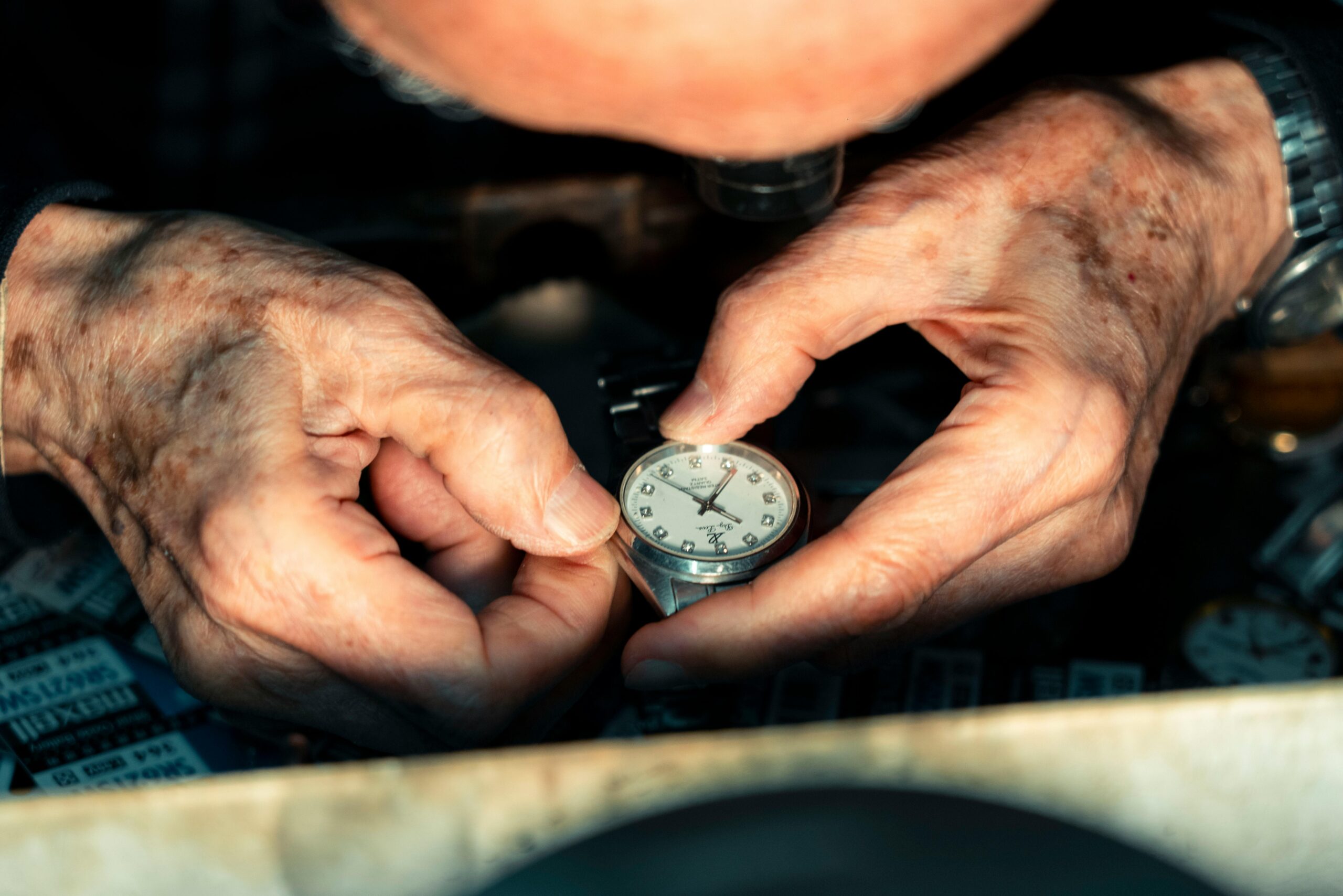Why Is the Ticking of Mechanical Watches So Satisfying?

Some sounds evoke a sense of calm in our minds—raindrops tapping against a window, the scratch of a pencil on paper… and for watch enthusiasts, one of the most captivating of all: the tick of a mechanical watch. But why is this sound so uniquely satisfying?
For me, it’s not just the sound of a machine working—it’s the sensation of time flowing silently beneath the surface. When I got my first mechanical watch, I discovered its ticking late at night in complete silence. That was the moment I realized: this isn’t just a device—it’s something alive on my wrist.
This article explores more than just a sound; it’s a journey through emotion, memory, and choice.
The Rhythm of Time: Why Does It Tick?
Mechanical watches generate a steady rhythm through the oscillation of the balance wheel. The frequency of that movement determines the character of the ticking sound.
- 3 Hz (21,600 vph): Slower, more pronounced tick (e.g., Miyota 8215)
- 4 Hz (28,800 vph): Smoother but still audible rhythm (e.g., ETA 2824)
- 5 Hz (36,000 vph): High-frequency hum with a rapid cadence (e.g., Zenith El Primero)
These ticks are the dance of microscopic components, orchestrating time.
The Psychological Impact: Why Does Our Brain Respond?
The ticking of a mechanical watch is rhythmic—predictable, like a heartbeat. It creates a sense of order, something our minds instinctively find soothing. Unlike digital screens, mechanical watches make time feel tangible.
- Improved focus: In quiet environments, rhythmic sound can enhance concentration.
- Nostalgic trigger: The ticking reminds many of old clocks or heirloom pocket watches.
I still recall the sound of my grandfather’s pocket watch tucked under his pillow. That subtle rhythm occasionally echoes in my memory during moments of silence.
Digital Silence vs. Mechanical Sound
Digital watches boast their silence. But for enthusiasts, this absence of sound can feel like something is missing. Ticking isn’t just a byproduct—it’s a sign of life.
Some wearers find the absence of that soft mechanical beat unsettling, as if something essential is lost.
Capturing Emotion with a Microphone: Why Is Watch Ticking So Popular on YouTube?
Search for “watch ticking ASMR” on YouTube, and you’ll find hundreds of videos. The sound isn’t just auditory—it’s tactile and emotional.
Some clips offer nothing but the ticking of a watch and rack up thousands of hours of views. It shows how a timekeeping tool becomes a deeply personal object. On quiet evenings, I’ve caught myself lifting a watch to my ear, letting that steady rhythm remind me there’s still structure amid the noise of life.

Which Watches Offer the Most Satisfying Tick?
- Manual-wind watches: No rotor noise, clearer ticking.
- Low-frequency movements: More defined gaps between ticks.
- Vintage pieces: Older materials and thinner cases enhance acoustic resonance.
Personally, the clearest ticking I’ve ever heard came from an old Poljot. The sound wasn’t just rhythmic—it carried a faint metallic echo that seemed to hold time itself.
Conclusion
The ticking of a mechanical watch isn’t merely a vibration. It’s a subtle reminder of time’s presence—a sound that deepens our connection to the moment. In a digital world where silence is often praised, for watch lovers, a tick might mean everything.
Sometimes, that ticking sound takes you back—to a memory, a person, a forgotten dream. That’s when a watch doesn’t just tell the time; it links you to time itself.
